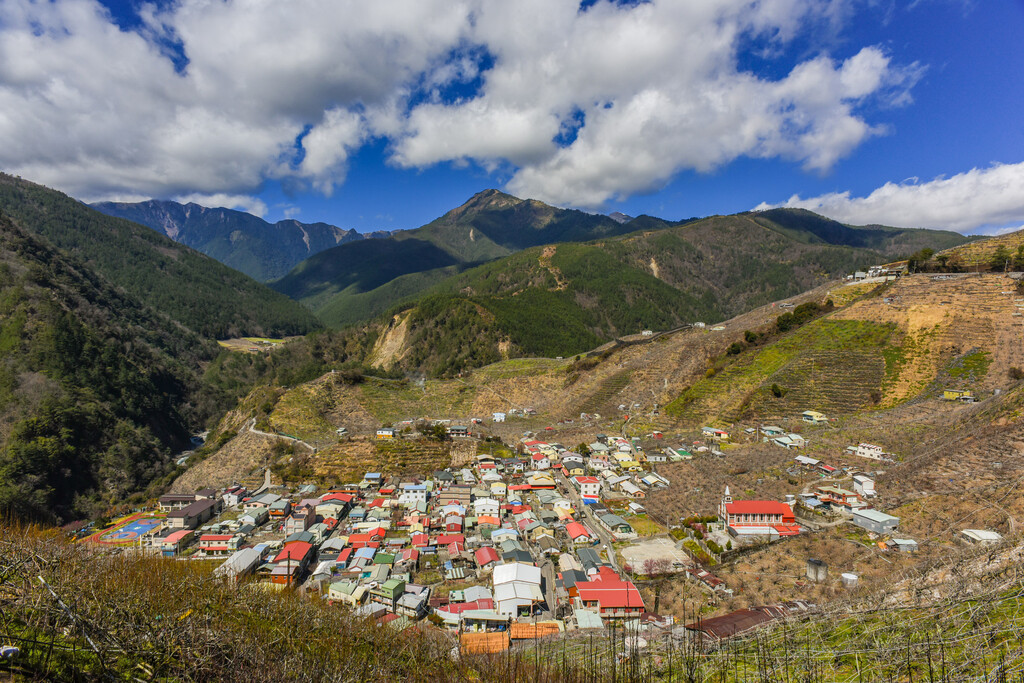Get PeakVisor App
Sign In
Search by GPS coordinates
- Latitude
- ° ' ''
- Longitude
- ° ' ''
- Units of Length

Yes
Cancel
Share ×

Scan the QR code and open PeakVisor on your phone
❤ Wishlist ×
Choose
Delete
Qilan Wildlife Reserve is an essential habitat for both flora and fauna in northern Taiwan's lofty cypress dense forests. The highest of the reserve’s 78 named peaks is Nanhubeishan (南湖北山) at 3,536 metres (11,601 ft) in elevation, while Tayux Moyung (泰矢生山) is the most prominent with 760 m/2,493 ft) of prominence.

Qilan Wildlife Reserve (棲蘭野生動物重要棲息環境) is situated in Datong Township (大同鄉) of Yilan County (宜蘭縣). The park’s 560 sq. km (216 sq. mi) area of land overlaps the boundaries of four counties: Yilan County (宜蘭縣), New Taipei City (新北市), Taoyuan City (桃園市), and Hsinchu County (新竹縣). The hilly peaks of Qilan Wildlife Reserve touch the northern boundaries of Shei-Pa National Park (雪霸國家公園).
While Nanhubeishan and Tayux Moyung are the highest and most prominent mountains in the region, other mountains of interest in the reserve include Shenmazenshan (審馬陣山), Kalayeshan (喀拉業山), Badufushan (巴都服山), Jing Jie Shan (境界山), and Babokulushan (巴博庫魯山).
Li Mao An Shan (利茂岸山) is the northernmost peak in the reserve. Meanwhile, Hong Chai Shan (紅柴山) borders the area to the east, Duo Jin Tun Shan (多加屯山) serves as the reserve’s southernmost boundary, and Jing Jie Shan (境界山) lies in the westernmost region of the reserve.
The annual rainfall of the region is approximately 5,000 mm (197 in), much of which falls as mist that hugs the mountains and infuses the forests with a dreamlike charm all year long. The jungle-filled foothills of Qilan also receive an average of 250 rainy days a year.
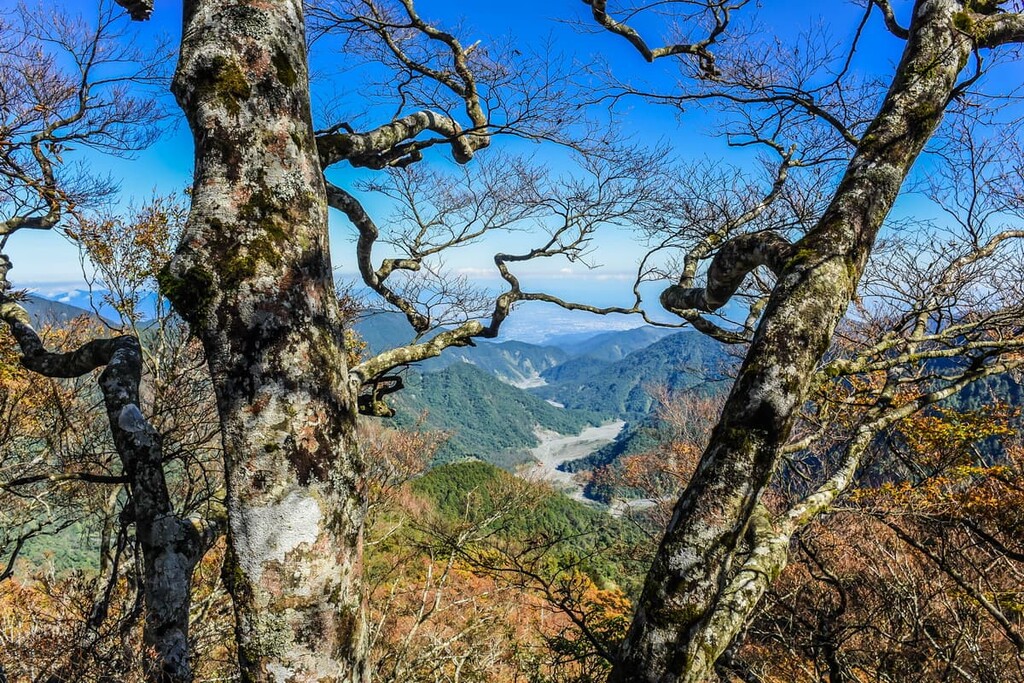
The expansive area of Qilan Wildlife Reserve is grouped into two different climates. In the northwest mountain zone, summer brings cloudy mists and low temperatures while cold air belts frostily breeze across the foggy peaks. The eastern section of the region occupies a high altitude of 2,000 metres (6,562 ft). Here, summer announces the arrival of typhoons and winter brings icy storms that blanket the region in its bitterly cold breath.
Situated just south of Qilan Wildlife Reserve rests the hazy forest woodland of Taipingshan National Forest Recreational Area (太平山國家森林遊樂區), while the challenging mountain peaks of Chatianshan Nature Reserve (插天山自然保留區) lie just northwest of Qilan. Additionally Neidong National Forest Recreation Area (內洞國家森林遊樂區) is located to the northeast of the reserve, Jiufenshan (九分山) is situated to the east, and Shimadashan (石麻達山) sits just to the west.
The mountains of Qilan Wildlife Reserve form a northern spur of the Xueshan Range (雪山山脈). This expansive mountain range stretches from Nantou County (南投縣) in central southwest Taiwan all the way to the northeastern coast of the island in New Taipei City (新北市), encompassing 20 out of the 100 Peaks of Taiwan along the way.
Rocks in the reserve are mostly metamorphosed sedimentary rocks from the Tertiary period, including dark grey hard shales, slates, and phyllites with good cleavage. The western mountains of Qilan are dominated mainly by hard shale, which gradually transforms to slates and phyllites as the hills stretch to the east.
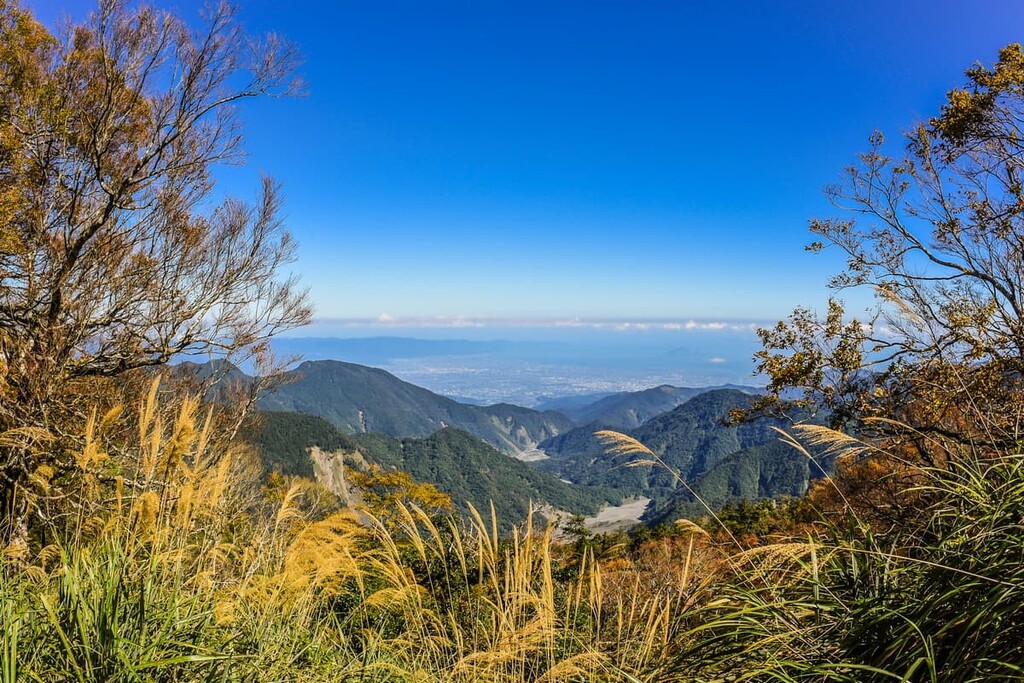
The vast woodland area of Qilan Wildlife Reserve spans 128 sq. km (49 sq. mi) of cypress forests divided into three types: old-growth cypress forests, mixed forests of red cypress and cypress, and red cypress forests.
Red cypress dominate the forest from 750 metres (2,461 ft) in elevation to just below 1,500 metres (4,921 ft). Meanwhile, Cypress can be found from the lowest elevations of about 1,100 metres (3,609 ft), and old-growth cypress forests flourish in areas above 1,500 metres (4,921 ft).
Qilan Wildlife Reserve holds the most substantial stock of giant trees in Taiwan. Indeed, some 51 trees over 1,000 years old stretch to the sky in the Qilan Divine Tree Garden (棲蘭神木園區), which looms over visitors who crane their necks in order to fully appreciate the height of these gigantic trees. Additionally, Taiwan red cypress mainly dominates the Qilan Divine Tree Garden, with four of the 51 being Taiwan yellow cypress.
Considered ‘living fossils,’ these ancient cypress trees, together with the equally ancient specimens of the gymnosperm Taiwania and Luanta fir found in the area, add potential promise to the establishment of a World Heritage Site that highlights Qilan’s primeval forest.
Millions of years ago, cypress forests were found in abundance; however, they are now only found along the west coast of North America, Japan, and Taiwan. Thus, the cypress forest of Qilan is a protected area to promote the growth of these mountainous growing trees. In addition to cypress, other rare and endangered plants found in the region are the endemic Sassafras randaiense, Hayata orchid, and Taiwania cryptomerioides.
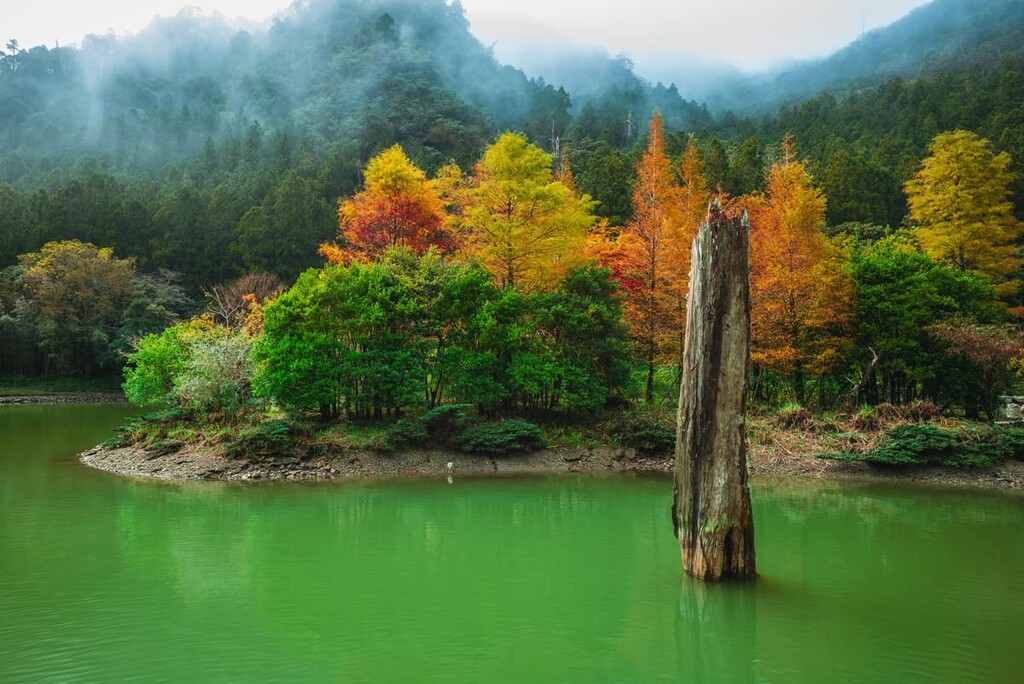
In the lower elevations of about 700 to 800 metres (2,297 to 2,624 ft), which are found along the western North Island Cross Highway of Qilan Wildlife Reserve, the plant life mainly features an evergreen broad-leaf forest of Lauraceae and Fagaceae plant species.
Adding to the natural forest beauty of this mountainous region are the flowering pathways of Japanese apricots, plums, peaches, and Taiwan cherries. These trees bloom shades of pastel pinks during the spring months, adding a romantic and dreamy ambience to the area.
The streams of Qilan are also brimming with life. Indeed, these streets are ecologically rich as many aquatic plants and marine species inhabit the calm waters that flow through the reserve. A total of 108 species of gymnosperms and angiosperms, as well as 28 species of ferns, have been recorded in the waters of Qilan. The emerald Taipei green tree frogs and yellow pond turtles are also protected wildlife in the reserve.
Another protected wildlife species in Qilan is the Onychostoma barbatulum, otherwise known as the Taiwan shoveljaw carp. This fish group populates the upper reaches of the Songlou Creek and are known to inhabit mountain waters between 300 to 1,000 metres (984 to 3,281 ft) in elevation.
As a result of deforestation on the natural environment, a mass decline of the Taiwan shoveljaw carp has occurred. Therefore, efforts are in place to preserve this fish species back to its original numbers. In addition, the rare and endemic broad-tailed swallowtail butterfly, considered to be one of Taiwan’s treasures, is also a protected wildlife group in Qilan.
Typical animals found in the reserve's vicinity are Formosan macaques, bamboo chickens, squirrels, dragonflies, damselflies, frogs, and the colourful Taiwan barbet.
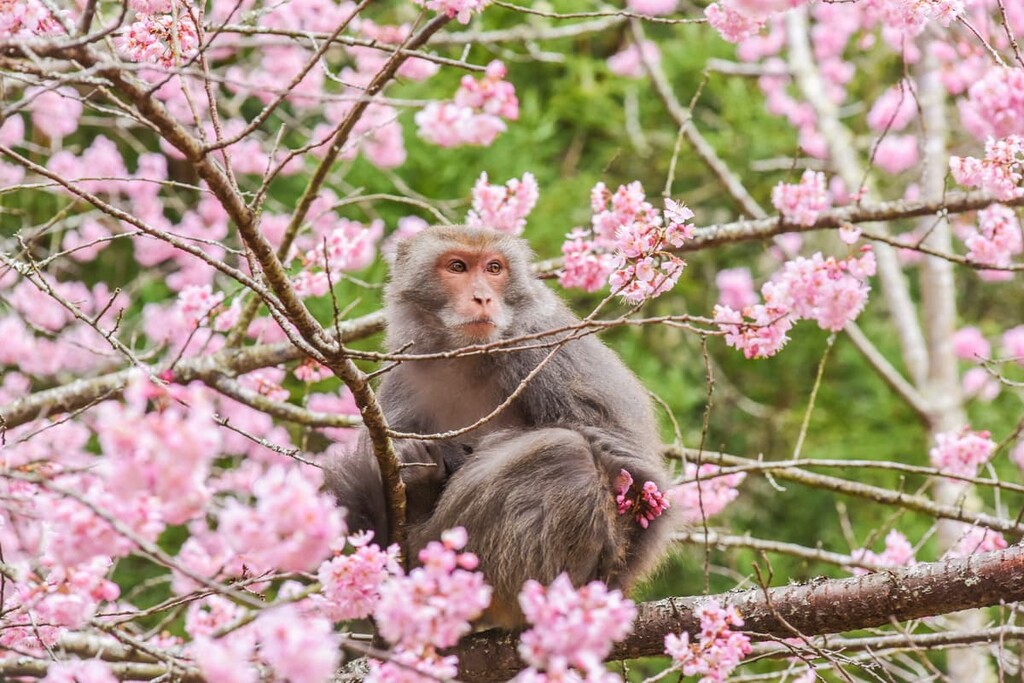
The mountainous region of Qilan is the settlement area of the Atayal people who forged trails throughout the mountain and forest as pathways for hunting and trading. Ancient Atayal folklore tells how a giant cypress tree grew from the burial place of two ill-fated lovers, decorated with beautiful orchids. Thus, Qilan is translated as ‘orchid resting place’ in the Atayal language.
During the Japanese Occupation Era, the Qilan forest was noticed as a hotspot for logging due to the numerous swarms of cypress saplings that populated the area. However, it was only after World War II that the government developed the logging industry in Qilan, which lasted from May 1959 until June 1994.
Cypress was a particularly intriguing commodity for the regional government as they could make essential oils from its fragrant wood. As a result, the government stood to make a substantial profit from exporting this special commodity. However, the logging business was halted in Taiwan once the government noticed the dwindling forests that resulted from the felling of cypress trees.
In 1990, the year that logging was banned throughout the whole of Taiwan, the government initiated a tree protection plan in which older trees over 1,000 years old were given a divine status to gain respect and reverence from the public. In addition, areas with cypress forests were granted protection through the institution of reserves and forest recreation areas.
The Qilan area was used as a farm for cultivating afforestation tree seedlings after the suspension of the logging industry. Qilan Forest Recreation Area was formed in 1992, allowing visitors to wander along the revered trail of the Divine Tree Garden (棲蘭神木園區) and visit other beautiful natural sights in the park. On February 15, 2000, the Qilan Wildlife Reserve was established to protect the wetland species in the region.
Qilan Wildlife Reserve is synonymous with its dense forests of giant trees, which is the main attraction to the area. Due to the verdant sheltered peaks of Qilan, the views along paths are limited; however, the attraction of the trails is feeling totally submerged in a hilly emerald jungle, appreciating the beauty and connection with nature.
Undoubtedly the highlight of visiting QIlan Wildlife Reserve, Qilan Divine Tree Garden (棲蘭神木園區) bears hundreds of ancient Taiwan cypress and Taiwan red cypress trees, most of which are between 400 and 1,00 years old. Indeed, the rich velvety emerald cloak of moss hugging the long, outstretched limbs of the old, gigantic trees is a sight to behold in Taiwan’s largest cypress park.
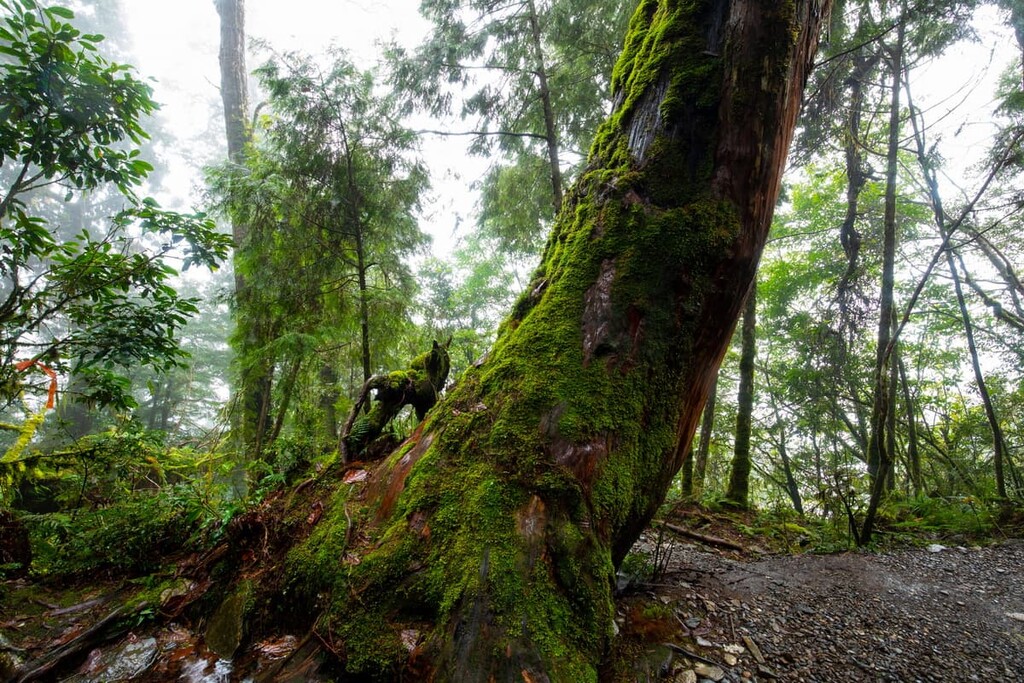
In this area, a total of 51 giant trees have reached a divine status, meaning that they have aged over 1,000 years. Each tree has been named after a famous Chinese dignitary, matching the tree's age to its tribute. Some examples are Sima Qian, the historian; Chu His, the philosopher; Bao Zheng, the judge; and, most importantly, the oldest cypress at 2,560 years in age is named after the Chinese philosopher, Confucius.
Both short and long circular hiking trails, at 1.2 km (0.7 mi) and 2.3 km (1.4 mi), pass the imposing colossal trees, whose sight is both astounding and humbling to behold.
While rainy conditions create a slippery path, the best conditions to visit the tree garden is in a light drizzle with a fair chance of fog and a cool breeze to enhance the mystical and fantastical atmosphere of the trail.
Located in the ecological transition zone between mountains and plains, the primitive Songluo National Trail (松羅國家步道) spans a peaceful 4 km (2.5 mi). The path follows the Songluo Creek upstream for 2 km (1.2 mi), where hikers can turn around and either return on the same course or venture along the mountainside path to experience a different landscape.
This trail was once a route that the Atayal people ventured to in order to hunt, adding a historical significance to the walk. While enjoying history, hikers can admire the rampant scenery of overgrown forest encircled by lofty mountains while inhaling the fresh river air.
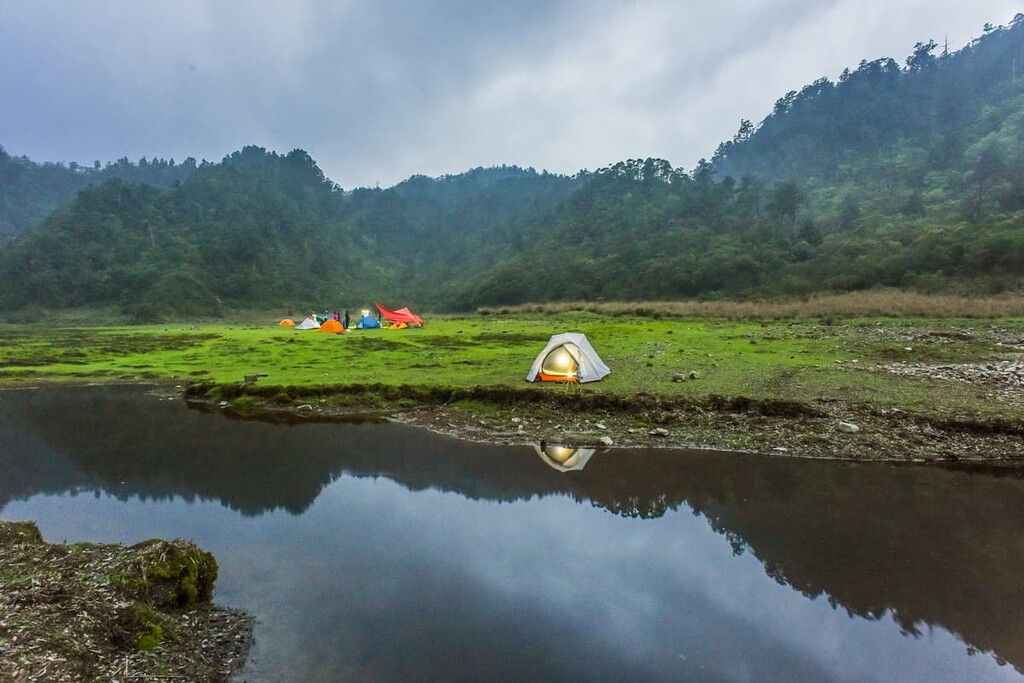
Trail highlights include the presence of a gurgling stream, which adds a soundtrack of rippling intensity to the lush sheltering forest. Hikers can observe the protected marine life in the crystal clear waters of the stream and savour the subtropical forest of camphor trees. The route is relatively easy as the slope is gentle, and the trail is both smooth and devoid of any steps.
The verdant jungle of Xiaotaishan Forest Bathing Trail (小泰山森林浴步道) is 2.1 km (1.3 mi) long and provides hikers with a chance to wade through old-growth forest. The trail both starts and ends at the previous residence of the former president Chiang Kai-Shek.
A scenic viewing platform is located along the trail, too. From here, hikers can admire the landscape overlooking the confluence of three rivers: the Lanyang Creek, as well as the tributaries of the Duowang Creek and Tianguer Creek.
While the trail has many steps, it gradually winds its way up a gentle gradient, with groups of Formosan macaques frequenting the pristine path. Even though the macaques are wild, they pose minimal threat to visitors, provided that no food is being consumed on the path.
After Tianshang Bridge, the forest consists of a herbarium of native plants of Cymbidium. A sheltered forest canopy of Formosan juniper, Taiwan cypress, Calocedrus formosana, Taiwan yew, green maple, Taiwanese sweet gum, Chinese cork oak, and Japanese zelkova occupy the forest terrain.
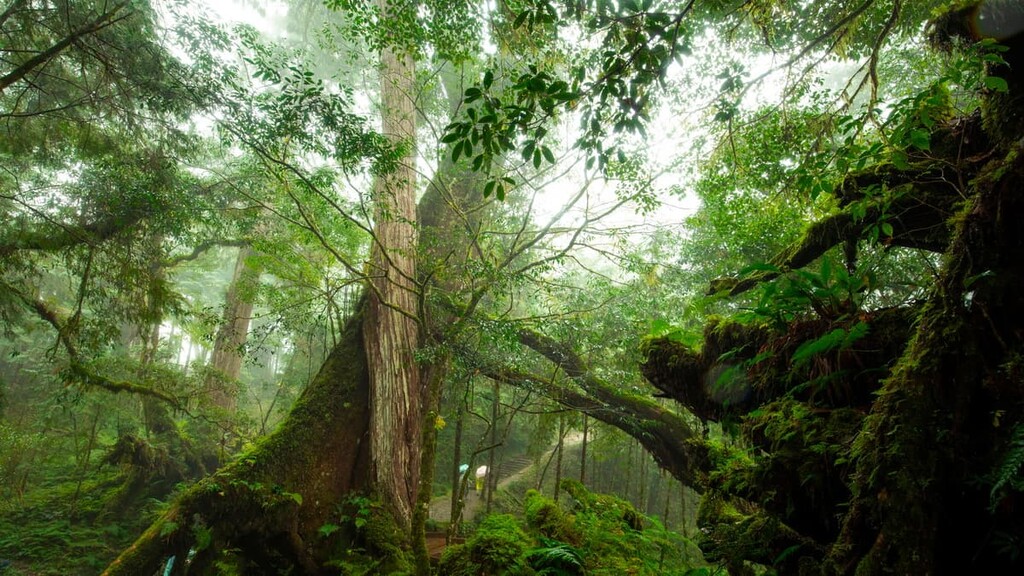
Ambling along Xiaotaishan Forest Bathing Trail reportedly promotes Phytoncide and anions known to sterilise and purify the body and restore natural energy. Phytoncide is created from the intake of forest aromas, created mostly from fragrant cypress and cedar trees, while the air vitamins of anions are developed from the abundance of water and moisture infiltrating the fresh air.
The 3 km (1.9 mi) Jiuliao Creek Trail (九寮溪步道) runs along the Jiuliao River to the magnificent 15 meter (49 ft) high Jiuliao River Waterfall. Here, a veil of light foam cascades and roars over the high boulders, creating a mesmerising sight and sound. What’s more, as the snow-capped peaks of the surrounding mountains melt in early spring, the ferocity of cadence and resonance of the waterfall increases, creating a dramatic yet captivating scene.
The cool yet humid trail passes through a broadleaf forest in low range, veering onto a coniferous forest as the elevation increases. The bubbling stream, flamboyant ferns, and lush forests in the region also create a wondrous setting with a wide variety of plants growing along the trail. These include Ipomoea batatas, Asarum epigynum, Sphaeropteris lepifera, and hibiscus.
Pengpengshan (梵梵山) was so named after the Atayal ‘bonbon’, which translates to ‘antler deer’. Ambitious hikers usually team this climb with Poluoshan (婆羅山) and Wushan (烏山), extending their journey through sprawling fir plantations and beautiful forests.
Pengpengshan is so dense in forest that there is no view from the summit. The highlight of the trail up the 1,713 metres (5,620 ft) mountain is the wispy feathers of fern, the grand presence of the traditional Christmas tree of Abies kawakamii and a collection of different tree shapes and sizes. It is incredible to climb this mountain in winter after a night of low temperatures as icy milky-white frost engulfs the frozen plants and trees, creating a magical winter woodland.
Many trees have fallen along the path, too, creating tunnels along the trail for visitors to enjoy. While the mountain is high, the track is gentle. A passage of Pseudosasa japonica bamboo even escorts you to the summit of Pengpenshan.

Literally meaning Cherry-Apricot Trail, this spectacular flowering trail features a variety of blooming flowers that create a romantic and dreamy appearance in the natural setting of Qilan. In fact, the path is often bursting with magenta mountain cherry blossoms, alongside a smattering of plum blossoms, pastel peach blossoms, Japanese apricots, deep purple Brazilian wild peony, and red fuzzy azaleas.
The Yingxing Trail, together with the nearby flowering Yingmeitao Trail, is hugely popular in late winter as this is the best time to see the region’s poetically pretty cherry blossom blooms.
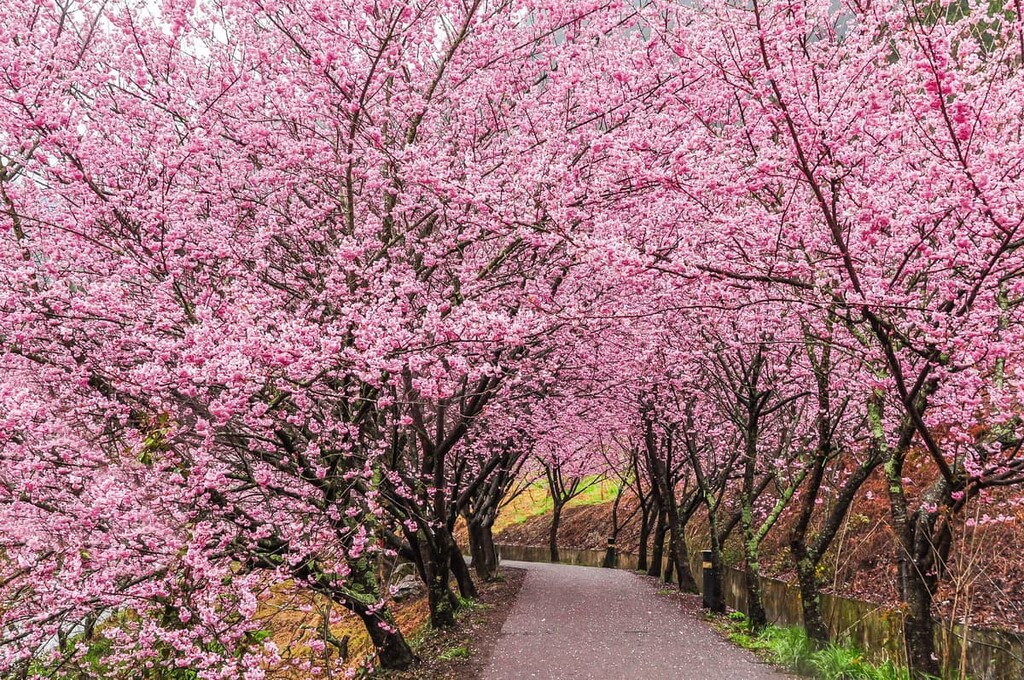
As the Qilan Wildlife Reserve is situated in Yilan County, the closest city to the park is Yilan City (宜蘭市). As Qilan Wildlife Reserve lies in northern Taiwan, another option would be to stay in Taipei City (臺北市) and make one’s way to the park from there.
Located on the northeastern coast of Taiwan, Yilan City rests on a plain of rice paddies with the waters of the Pacific Ocean lapping on Yilan’s shores. Yilan City offers a thrall of scenic attractions due to its natural beauty.
A visit to the turtle-shaped Gueishan Island off the coast of Yilan City is a major attraction for locals and tourists, alike. From the island's shores, visitors can enjoy whale watching in the Pacific Ocean waters and appreciate the stunning spectacle of the famed sunrise.
Yilan is a hotspot for surfers and lovers of riding the sea waves. There are many well-known beaches for surfing, but one of the best has to be Suao, renowned for its vast challenging waves. Even for those who do not venture too far into the ocean waters, a stroll along the crashing strip of sea and inhaling the fresh salty sea air is an enjoyable activity for many.
The bustling nightlife of Dongmen Night Market is an enthralling experience, especially for first-time visitors to Taiwan. As you wander down the pulsating neon signpost stretch of Gongyuan Road, which is often packed with smiling street vendors, tantalising smells and intriguing delicacies fascinate the most curious of minds. Crispy egg cakes, deep-fried pork rolls, Sanxing spring onion buns and lamb soup are popular foods to try as you stroll through the market.

Tea lovers can also treat themselves to a traditional Taiwanese tea ceremony in Yilan County. Not far from Yilan City in Datong Township, the Feng Chung Villa offers a highly acclaimed tea ceremony that highlights the several stages involved in appreciating and savouring a tea. Taiwan tea ceremonies have been around for 400 years, and participating in a tea ceremony is a fitting way to relish the intricate process of tea tasting.
Taipei is a fascinating city brimming with exhilarating night markets, a captivating and lively street food scene, and intricately ornate temples that are juxtaposed against exciting futuristic elements of this bustling city.
The show-stopping Taipei 101 skyscraper stretches to 508 metres (1,667 ft) high with a total of 101 floors. It held the title of the world’s tallest building between 2004 to 2009; however, it lost that title and now ranks as the number one tallest green building in the world due to its low carbon emissions.
For a birds-eye view of the city basin, hop on the Maokong Gondola, which lifts visitors into the skies of Taipei and then transports them to Maokong (貓空) over fields of tea plantations. Maokong is a mountainous village known as one of the largest producers of oolong tea. Here, there are many mountain trails to wander, tea houses to visit and sample the locally grown teas, as well as incredible views of the city and low-lying tea plantations to savour.

For a historical viewpoint of Taipei, a trip to the stately National Palace Museum, the grand National Chiang Kai-shek Memorial Hall, and the captivatingly beautiful Longshan Temple will enthral and educate tourists on history, culture, and religion in Taiwan.
Finally, Ximending is a fun, quirky neighbourhood in Taipei that is often called the ‘Harajuku of Taipei.’ Flashes of neon, pops of blinding bright colour, and pulsating effervescent energy emanate from this otherworldly pedestrian parade. Wandering around this area is hypnotising, and if anything, you will leave this whimsical, light-hearted area in a joyous trance.
Visitors coming from the major cities of Kaohsiung, Tainan, Chiayi, Taichung, Hsinchu, and Taoyuan City should make their way to Taipei Main Station either via the Taiwan High Speed Rail (HSR) or the express train (TRA).
Once at Taipei Main Station, visitors shall take the TRA train to either Luodong or Yilan City then transfer to the Kuo-Kuang bus 1750 bound for Taipingshan. Visitors should alight at the Qilan Recreation Area Stop to enter the Qilan Wildlife Reserve.
Alternatively, visitors can hire a car or scooter from Taipei or Yilan. The journey to Qilan is 95 km (59 mi) and 36 km (22 mi), respectively.
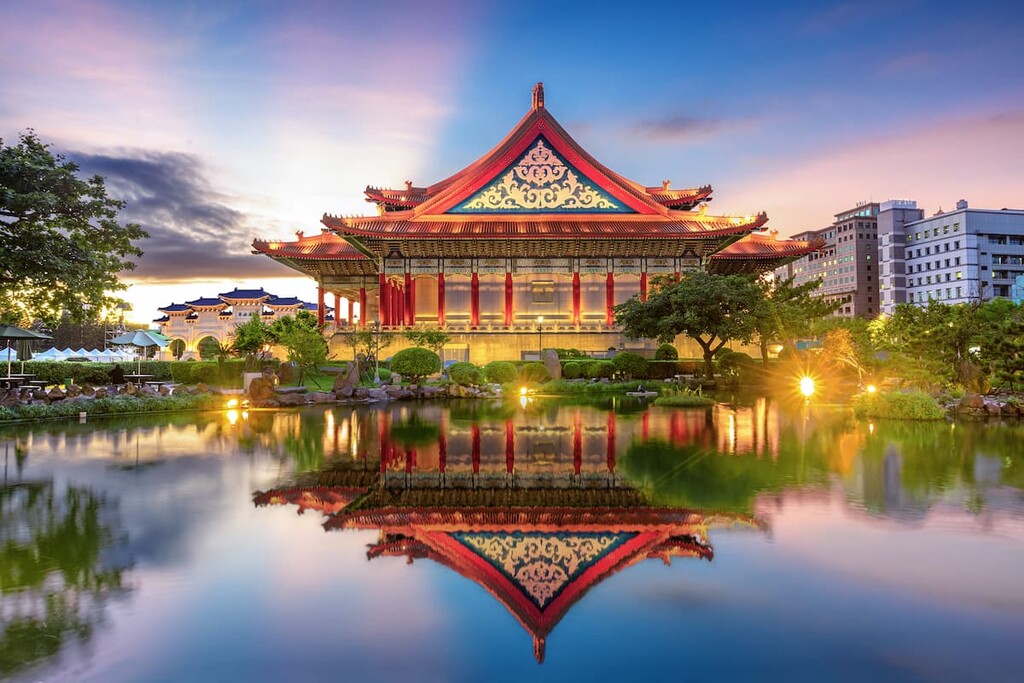
Explore Qilan Wildlife Reserve with the PeakVisor 3D Map and identify its summits.

